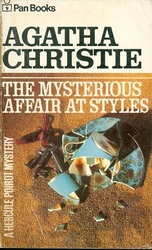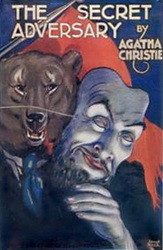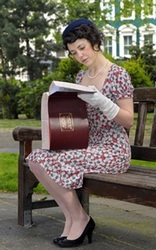Agatha Christie
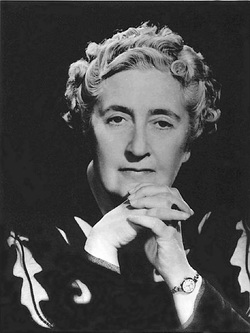
Agatha Christie was born in Devon, England in 1890. She died at age 85 in 1976. Christie is the best-selling author of all time. She wrote romantic, mystery, and nonfiction novels. She has sold over four billion books worldwide and her novels have been translated into over 103 languages. Only the Bible has sold more copies than her books and only the works of Walt Disney Productions has surpassed her in most translated works. Agatha Christie wrote eighty novels and short story collections. She also wrote over a dozen plays, including The Mousetrap, which is now the longest running play in theatrical history (from 1952 to the present in which 23,000 performances of it have been done). She wrote her six romance novels under the pen name Mary Westmacott. Agatha Christie has been labeled as a master of suspense, plotting, and characterization. 1926-1929 was a period of grief for Agatha Christie's because she lost her mom, got a divorce, and lost her brother. Researchers have suggested that in the last years of her life, Christie may have begun to suffer from Alzheimer's disease or other dementia.
Her official site is http://www.agathachristie.com/.
Her official site is http://www.agathachristie.com/.
Personal Essay on Agatha Christie
Agatha Christie is the best selling author of all time. She is known for her mystery, romantic, and nonfiction novels. Her inspiration for characters and ideas came from things she knew; she was a natural observer, for example, of her family's circle of friends and their interactions. She made notes in several notebooks, writing down ideas and potential plots and characters as they came to her. She developed two very famous characters, Hercule Poirot and Jane Marple, who each appeared in several of her books. She developed these characters after being inspired by real people. Hercule Poirot was inspired by a real Belgian policeman and Jane Marple was inspired by her grandmother and other elderly ladies from her childhood. Often times for her, the most everyday events triggered a new plot. Her second book The Secret Adversary emerged from a conversation overheard in a tea shop. Murder on the Links was thought of after she came across a newspaper article about a suspicious death in France. Agatha also spent time working in a pharmacy during World War II. She learned a lot about toxins from this profession and that is reflected in her novels as many of the murders in her book are done with poison.
Almost all of Agatha Christie’s books focus on the British middle and upper classes. In most of her novels, the detective either stumbles across the murder or is called by an old acquaintance, who is somehow involved. She makes her stories so that as the detective is investigating the crime, the readers can analyze it as well and try to solve the mystery themselves. Usually in her novels, one of the suspects usually dies because he has come to the realization of who the killer is and needs silencing. The detectives also organize a meeting of all the suspects and slowly reveals the guilty party, connecting several secrets that seem unrelated at first. In two of her books, the murderer turns out to be the narrator of the story. Christie’s stories, written with deliberately slow pace of prose, are known for their tense atmosphere and deep suspense.
I truly enjoyed reading And Then There Were None because it was unlike any other book I had read. From the beginning, it was very suspenseful and drew readers in by having a group of people eating dinner when suddenly a record starts playing a list of names of the guests and the people they have murdered. I like how Christie incorporated a riddle into the story line because it made things a little predictable about how the people were each one by one going to die. However, the riddle was also fairly abstract in certain parts and still made me think of how each line was going to affect a character. And Then There Were None was an interesting read because it contained several characters who were all suspects of being a murderer. I liked that as a reader, I could try to connect the clues together and guess who the murderer was as if I was the detective. Agatha Christie also made her passages very descriptive and when I was reading it, I could imagine what the characters felt like in their sense of panic. I think Agatha Christie is such a successful writer because of how much she brings the reader into the story.
After learning about Agatha Christie and reading And Then There Were None, I have been influenced by certain traits in her writing. Agatha Christie was known for writing stories in which the suspect one thought was the murderer would suddenly die off. This has taught me that writing stories that do not end or occur the way readers expect them to are more interesting pieces of work. Her work contained a lot of clingers which made a reader want to go on to the next page. I am going to try to include in my writing Agatha Christie’s trait of tying every aspect, that seemed irrelevant in the beginning, together in the end.
- Emily Dong
Almost all of Agatha Christie’s books focus on the British middle and upper classes. In most of her novels, the detective either stumbles across the murder or is called by an old acquaintance, who is somehow involved. She makes her stories so that as the detective is investigating the crime, the readers can analyze it as well and try to solve the mystery themselves. Usually in her novels, one of the suspects usually dies because he has come to the realization of who the killer is and needs silencing. The detectives also organize a meeting of all the suspects and slowly reveals the guilty party, connecting several secrets that seem unrelated at first. In two of her books, the murderer turns out to be the narrator of the story. Christie’s stories, written with deliberately slow pace of prose, are known for their tense atmosphere and deep suspense.
I truly enjoyed reading And Then There Were None because it was unlike any other book I had read. From the beginning, it was very suspenseful and drew readers in by having a group of people eating dinner when suddenly a record starts playing a list of names of the guests and the people they have murdered. I like how Christie incorporated a riddle into the story line because it made things a little predictable about how the people were each one by one going to die. However, the riddle was also fairly abstract in certain parts and still made me think of how each line was going to affect a character. And Then There Were None was an interesting read because it contained several characters who were all suspects of being a murderer. I liked that as a reader, I could try to connect the clues together and guess who the murderer was as if I was the detective. Agatha Christie also made her passages very descriptive and when I was reading it, I could imagine what the characters felt like in their sense of panic. I think Agatha Christie is such a successful writer because of how much she brings the reader into the story.
After learning about Agatha Christie and reading And Then There Were None, I have been influenced by certain traits in her writing. Agatha Christie was known for writing stories in which the suspect one thought was the murderer would suddenly die off. This has taught me that writing stories that do not end or occur the way readers expect them to are more interesting pieces of work. Her work contained a lot of clingers which made a reader want to go on to the next page. I am going to try to include in my writing Agatha Christie’s trait of tying every aspect, that seemed irrelevant in the beginning, together in the end.
- Emily Dong
Most Famous Characters

Hercule Poirot
This character has appeared in 33 of Christie's novels and 54 of her short stories. Hercule Poirot is a private Belgian detective based in London, England. He is the only fictional character to be honored with a front page obituary of The New York Times. Christie's inspiration for Poirot was the Belgian refugees who had escaped the war and settled in the Parish of Torre. He is described as being 5 feet, 4 inches tall, has green eyes, and an egg-shaped head. He is recognized by his mustache and his formal clothing. He supposedly had a limp when he walked and always wore patent leather shoes. He likes the indoors and for things to be in order but despises dust and unclean homes. During investigations, he uses methods such as examining footprints, collecting cigarette ashes, searching for clues with a magnifying glass, or taking fingerprints. He believes the best tool for crime solving is the mind because of the "little grey cells". He is known as an armchair detective; he just has to "sit still in an armchair and think".
This character has appeared in 33 of Christie's novels and 54 of her short stories. Hercule Poirot is a private Belgian detective based in London, England. He is the only fictional character to be honored with a front page obituary of The New York Times. Christie's inspiration for Poirot was the Belgian refugees who had escaped the war and settled in the Parish of Torre. He is described as being 5 feet, 4 inches tall, has green eyes, and an egg-shaped head. He is recognized by his mustache and his formal clothing. He supposedly had a limp when he walked and always wore patent leather shoes. He likes the indoors and for things to be in order but despises dust and unclean homes. During investigations, he uses methods such as examining footprints, collecting cigarette ashes, searching for clues with a magnifying glass, or taking fingerprints. He believes the best tool for crime solving is the mind because of the "little grey cells". He is known as an armchair detective; he just has to "sit still in an armchair and think".
n
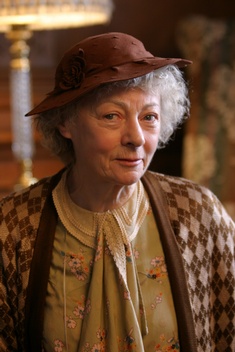
Miss Jane Marple
This character is an amateur detective and appears in twelve novels and in twenty short stories. She lives in the village of St. Mary Mead in England. She is a tall, thin woman of between the age of 65 and 70. She has white hair, pale blue eyes, and a pinkish wrinkled face. Her hobbies consist of bird watching, gardening, and knitting. She has also never been married. Miss Marple's character was based on Christie's grandmother and other old ladies that were present in her childhood. In the novels, she often embarrasses the local policemen by solving mysteries that have them stumped.
This character is an amateur detective and appears in twelve novels and in twenty short stories. She lives in the village of St. Mary Mead in England. She is a tall, thin woman of between the age of 65 and 70. She has white hair, pale blue eyes, and a pinkish wrinkled face. Her hobbies consist of bird watching, gardening, and knitting. She has also never been married. Miss Marple's character was based on Christie's grandmother and other old ladies that were present in her childhood. In the novels, she often embarrasses the local policemen by solving mysteries that have them stumped.
Passage from And Then There Were None
Ten little Indian boys went out to dine;
One chocked his little self and then there were nine.
Nine little Indian boys sat up very late;
One overslept himself and then there were eight.
Eight little Indian boys traveling in Devon;
One said he'd stay there and then there were seven.
Seven little Indian boys chopping up sticks;
One chopped himself in halves and then there were six.
Six little Indian boys playing with a hive;
A bumblebee stung one and then there were five.
Five little Indian boys going in for law;
One got in Chancery and then there were four.
Four little Indian boys going out to sea;
A red herring swallowed one and then there were three.
Three little Indian boys walking in the Zoo;
A big bear hugged one and then there were two.
Two little Indian boys sitting in the sun;
One got frizzled up and then there was one.
One little Indian boy left all alone;
He went and hanged himself and then there were none.
One chocked his little self and then there were nine.
Nine little Indian boys sat up very late;
One overslept himself and then there were eight.
Eight little Indian boys traveling in Devon;
One said he'd stay there and then there were seven.
Seven little Indian boys chopping up sticks;
One chopped himself in halves and then there were six.
Six little Indian boys playing with a hive;
A bumblebee stung one and then there were five.
Five little Indian boys going in for law;
One got in Chancery and then there were four.
Four little Indian boys going out to sea;
A red herring swallowed one and then there were three.
Three little Indian boys walking in the Zoo;
A big bear hugged one and then there were two.
Two little Indian boys sitting in the sun;
One got frizzled up and then there was one.
One little Indian boy left all alone;
He went and hanged himself and then there were none.
Reviews on Agatha Christie's Work
Historian C.V. Wedgwood wrote of Christie: “Her social settings, her characters and her dialogue are always accurately observed. There is no better all-round craftsman in the field.”
"Christie remains a favorite for her sly and ever surprising plot twists and turns and for her “murders of manners” (my own term) that exclude the sordid and ugly "real" crimes of everyday life. She is pure escapism—the Sherlock Holmes type, not the Mary Higgins Clark type—for her mysteries are replete with complexities and insightful analyses of human nature. When you’re cocky enough to think that you have figured out the Christie formula, you’re apt to become quickly humbled when you find yourself screeching to an abrupt halt at the dead end toward which you have been steered."
-Pamela St. Clair
Mr. Prichard, chairman of Agatha Christie Ltd, stated "What accounts for [her] popularity? The books don't date. I once challenged someone to read a book by my grandmother from the 1930's, and then read ones from the 40's, 50's and 60's, and tell me which decade each had been written in. Most people would fail that test. It doesn't matter when they were written. They seem timeless, just as appropriate in the 1990's as in the 1930's.''
"For today’s readers, one pleasure of Christie’s books is her portrait of the times: the period between the two world wars, and, above all, the changes that took place after the second war."
- Joan Acocella from the New Yorker
"Christie remains a favorite for her sly and ever surprising plot twists and turns and for her “murders of manners” (my own term) that exclude the sordid and ugly "real" crimes of everyday life. She is pure escapism—the Sherlock Holmes type, not the Mary Higgins Clark type—for her mysteries are replete with complexities and insightful analyses of human nature. When you’re cocky enough to think that you have figured out the Christie formula, you’re apt to become quickly humbled when you find yourself screeching to an abrupt halt at the dead end toward which you have been steered."
-Pamela St. Clair
Mr. Prichard, chairman of Agatha Christie Ltd, stated "What accounts for [her] popularity? The books don't date. I once challenged someone to read a book by my grandmother from the 1930's, and then read ones from the 40's, 50's and 60's, and tell me which decade each had been written in. Most people would fail that test. It doesn't matter when they were written. They seem timeless, just as appropriate in the 1990's as in the 1930's.''
"For today’s readers, one pleasure of Christie’s books is her portrait of the times: the period between the two world wars, and, above all, the changes that took place after the second war."
- Joan Acocella from the New Yorker
Critical Essay on Agatha Christie by Joan Acocella
ABSTRACT: A CRITIC AT LARGE about Agatha Christie. The detective story was invented by Edgar Allan Poe, but he wrote only four of them before he lost interest. The first “career” practitioner of the genre who is still important to us today is Arthur Conan Doyle. Agatha Christie, who began publishing detective fiction thirty-three years after Conan Doyle, elaborated upon the traditional rules of detective fiction, in sixty-six novels published between 1920 and 1983. According to a number of sources, her books have sold more than two billion copies, making her the most widely read novelist in history. In the past year, two books on Christie have emerged: “The Duchess of Death: The Unauthorized Biography of Agatha Christie” (Phoenix; $25.95), by Richard Hack, and “Agatha Christie’s Secret Notebooks: Fifty Years of Mysteries in the Making” (HarperCollins; $25.99), by John Curran. Christie was born in 1890 and grew up in a seaside resort in Devon. She married Archie Christie, a member of the Royal Flying Corps, just after the First World War began. After the war, the couple settled in a London suburb, and Christie began writing novels. Describes a mysterious episode where Christie disappeared from home for ten days. In Christie’s novels, the murder that sets the plot in motion is rarely shocking. Furthermore, the victim is ordinarily someone with whom we do not sympathize. Christie created two famous detectives: Hercule Poirot and Jane Marple. In Curran’s “Agatha Christie’s Secret Notebooks,” the notebooks in question are school exercise books in which Christie worked out her plots. She made lists of possible victims, culprits, and M.O.s. Then she picked the combinations that pleased her. The writer thinks this shows Christie’s willingness to work by formula, and thereby to forego depth in favor of the puzzle. This practice exposed her to the contempt of some critics. The tradeoff is that Christie’s work is funny. A year after Christie’s divorce from Archie, she met an archeologist, Max Mallowan, in Iraq, whom, soon afterward, she married. In her mid-forties, she began to weary of writing, and she turned to drama—and then to film and TV—for which she adapted her novels and stories. She died in 1976, at eighty-five. For today’s readers, one pleasure of Christie’s books is her portrait of the times: the period between the two world wars, and, above all, the changes that took place after the second war.
Fun Facts About Agatha Christie
(From agathachristie.com)
1. In her childhood, Agatha Christie was home schooled by her mother and a succession of governesses.
2. She wrote her first book because of a challenge from her sister, Madge.
3. When she was a teenager, she studied to be a classical musician but was too nervous to perform.
4. She is the only female dramatist ever to have had 3 plays running simultaneously in London’s West End.
5. Her first book took 5 years to publish because it was rejected by 6 publishers.
6. A pile of all of the US editions of Peril at End House would stretch to the moon.
7. She has a rose named after her.
1. In her childhood, Agatha Christie was home schooled by her mother and a succession of governesses.
2. She wrote her first book because of a challenge from her sister, Madge.
3. When she was a teenager, she studied to be a classical musician but was too nervous to perform.
4. She is the only female dramatist ever to have had 3 plays running simultaneously in London’s West End.
5. Her first book took 5 years to publish because it was rejected by 6 publishers.
6. A pile of all of the US editions of Peril at End House would stretch to the moon.
7. She has a rose named after her.
Christie Holds A World Record
Agatha Christie holds the world record for the book with the thickest spine. This book measures over a foot long in height and contains 4,032 pages. The volume contains the complete Miss Marple stories – all 12 novels and 20 short stories. There have only been 500 made.
Works Cited
Acocella, Joan. "A CRITIC AT LARGE about Agatha Christie." The New Yorker. Web. 28 Nov. 2010.
<http://www.newyorker.com/arts/critics/atlarge/2010/08/16/100816crat_atlarge_acocella>.
(He wrote a critical essay on Agatha Christie)
"Agatha Christie Breaks a Third World Record." Agatha Christie. Web. 21 Nov. 2010.
<http://www.agathachristie.com/about-christie/the-queen-of-crime/agatha-christie-breaks-a-third-world-record/>.
"Agatha Christie." Wikipedia. 22 Nov. 2010. Web. 23 Nov. 2010.
<http://en.wikipedia.org/wiki/Agatha_Christie>.
"Christie Facts." Agatha Christie. Web. 22 Nov. 2010.
<http://www.agathachristie.com/about-christie/the-queen-of-crime/christie-facts/>.
Clair, Pamela St. "Exploring Agatha Christie's Art of Deception and Digression." Suite 101. 1 July 2000. Web. 28 Nov. 2010.
<http://www.suite101.com/article.cfm/british_literature/42851>.
(She wrote a review on Agatha Christie's writing.)
"Hercule Poirot." Hercule Poirot Central and Other Agatha Christie Info. Web. 25 Nov. 2010.
<http://www.poirot.us/poirot.php>.
"Hercule Poirot." Wikipedia. 22 Nov. 2010. Web. 25 Nov. 2010.
<http://en.wikipedia.org/wiki/Hercule_Poirot>.
"How Christie Wrote." Agatha Christie. Web. 21 Nov. 2010.
<http://www.agathachristie.com/about-christie/the-queen-of-crime/how-christie-wrote/>.
"Marple's Profile." Hercule Poirot Central and Other Agatha Christie Info. Web. 25 Nov. 2010.
<http://www.poirot.us/mprofile.php>.
"Miss Jane Marple." Hercule Poirot Central and Other Agatha Christie Info. Web. 25 Nov. 2010.
<http://www.poirot.us/marple.php>.
"Miss Marple." Wikipedia. 24 Nov. 2010. Web. 25 Nov. 2010.
<http://en.wikipedia.org/wiki/Miss_Marple>.
"Poirot." Agatha Christie. Agatha Christie Limited. Web. 25 Nov. 2010.
<http://www.agathachristie.com/story-explorer/characters/poirot/>.
"Poirot's Profile." Hercule Poirot Central and Other Agatha Christie Info. Web. 25 Nov. 2010.
<http://www.poirot.us/pprofile.php>.
Rothstein, Mervyn. "All Aboard! The Agatha Christie Centennial Is Rolling." The New York Times. 15 Sept. 1990. Web. 28 Nov. 2010.
<http://query.nytimes.com/gst/fullpage.html?res=9C0CE2DD163DF936A2575AC0A966958260&ref=agatha_christie&pagewanted=2>.
"The Queen of Crime." Agatha Christie. Web. 20 Nov. 2010.
<http://www.agathachristie.com/about-christie/the-queen-of-crime/the-queen/>.
<http://www.newyorker.com/arts/critics/atlarge/2010/08/16/100816crat_atlarge_acocella>.
(He wrote a critical essay on Agatha Christie)
"Agatha Christie Breaks a Third World Record." Agatha Christie. Web. 21 Nov. 2010.
<http://www.agathachristie.com/about-christie/the-queen-of-crime/agatha-christie-breaks-a-third-world-record/>.
"Agatha Christie." Wikipedia. 22 Nov. 2010. Web. 23 Nov. 2010.
<http://en.wikipedia.org/wiki/Agatha_Christie>.
"Christie Facts." Agatha Christie. Web. 22 Nov. 2010.
<http://www.agathachristie.com/about-christie/the-queen-of-crime/christie-facts/>.
Clair, Pamela St. "Exploring Agatha Christie's Art of Deception and Digression." Suite 101. 1 July 2000. Web. 28 Nov. 2010.
<http://www.suite101.com/article.cfm/british_literature/42851>.
(She wrote a review on Agatha Christie's writing.)
"Hercule Poirot." Hercule Poirot Central and Other Agatha Christie Info. Web. 25 Nov. 2010.
<http://www.poirot.us/poirot.php>.
"Hercule Poirot." Wikipedia. 22 Nov. 2010. Web. 25 Nov. 2010.
<http://en.wikipedia.org/wiki/Hercule_Poirot>.
"How Christie Wrote." Agatha Christie. Web. 21 Nov. 2010.
<http://www.agathachristie.com/about-christie/the-queen-of-crime/how-christie-wrote/>.
"Marple's Profile." Hercule Poirot Central and Other Agatha Christie Info. Web. 25 Nov. 2010.
<http://www.poirot.us/mprofile.php>.
"Miss Jane Marple." Hercule Poirot Central and Other Agatha Christie Info. Web. 25 Nov. 2010.
<http://www.poirot.us/marple.php>.
"Miss Marple." Wikipedia. 24 Nov. 2010. Web. 25 Nov. 2010.
<http://en.wikipedia.org/wiki/Miss_Marple>.
"Poirot." Agatha Christie. Agatha Christie Limited. Web. 25 Nov. 2010.
<http://www.agathachristie.com/story-explorer/characters/poirot/>.
"Poirot's Profile." Hercule Poirot Central and Other Agatha Christie Info. Web. 25 Nov. 2010.
<http://www.poirot.us/pprofile.php>.
Rothstein, Mervyn. "All Aboard! The Agatha Christie Centennial Is Rolling." The New York Times. 15 Sept. 1990. Web. 28 Nov. 2010.
<http://query.nytimes.com/gst/fullpage.html?res=9C0CE2DD163DF936A2575AC0A966958260&ref=agatha_christie&pagewanted=2>.
"The Queen of Crime." Agatha Christie. Web. 20 Nov. 2010.
<http://www.agathachristie.com/about-christie/the-queen-of-crime/the-queen/>.
